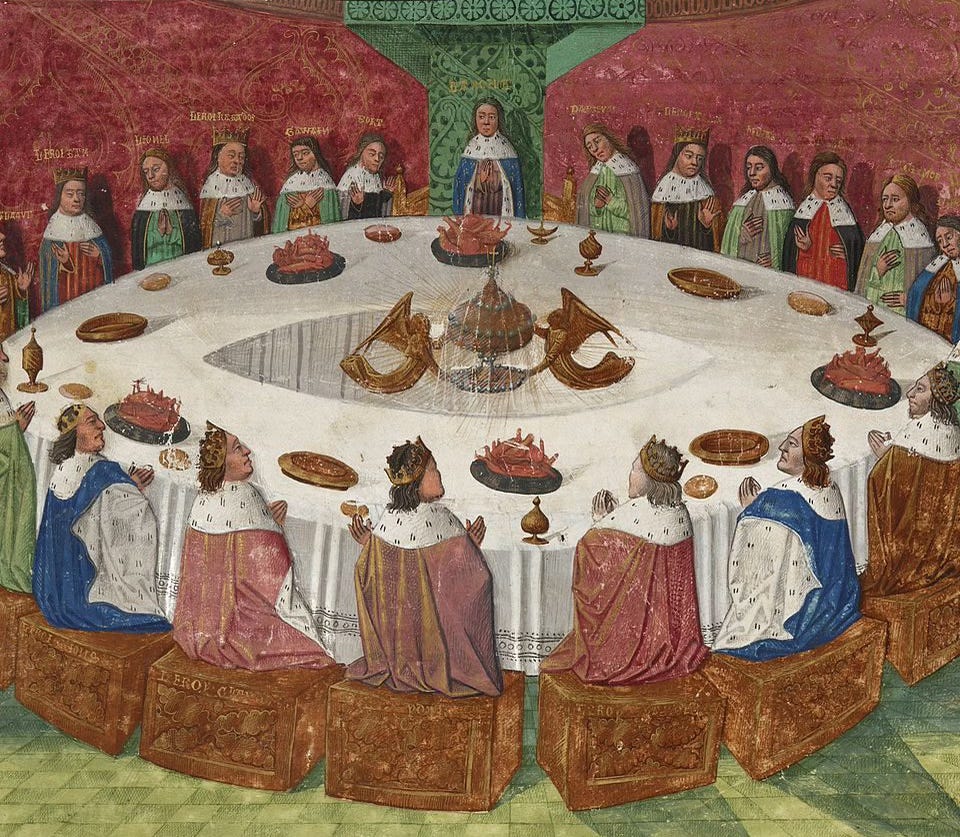
This year, Cambridge University Press renamed its academic journal Anglo-Saxon England, retitling it Early Medieval England and its Neighbours. It follows on the 2019 decision by the International Society of Anglo-Saxonists (ISAS) to change its name to the International Society for the Study of Early Medieval England. The reason is obvious and no one is pretending that it is anything other than it is. A Canadian member of ISAS loudly complained that it had a racist name and Cambridge University Press has bowed to similar political pressure.
The politicisation of the description “Anglo-Saxon” has led to a new round of questions being raised about what “Anglo-Saxon” means. Did the Anglo-Saxons call themselves that? Bede called his people “Angles or Saxons” and early Popes such as Gregory the Great evidently considered the Anglo-Saxon kings to be English. But the medieval Welsh called them Saxons (and the Welsh still do), although a different term was used for England. The medieval Welsh called England Loegr and it is the origin of the name Logres used for King Arthur’s realm in the medieval romances.
Where the name Loegr came from was not made clear until very recently, but it is best understood in the light of a remarkable early Anglo-Saxon find. In the 1930s, archaeologists excavating a cemetery near Caistor-by-Norwich in East Anglia discovered a runic inscription in a burial urn along with a series of gaming pieces. Caistor-by-Norwich is now called Caistor St Edmund and it is the site of the old capital of the Iceni, the capital of the ancient British queen Boudicca.
The gaming pieces from Caistor St Edmund are mostly astragali – animal anklebones that were used as dice. Some 33 are counters made of shale and bone, however, one third of which (the shale ones) are black in colour. They are clearly a set of gaming pieces used in a form of what is usually called tafl.
Historians know quite a lot about tafl because it was still being played by the Sámi in the eighteenth century when the Swedish botanist Carl Linnaeus recorded its rules. Tafl is a game that simulates soldiers laying siege to a castle and it is characterised by its pieces having a 2:1 ratio. The black pieces are the defenders and the white pieces the more numerous attackers. Gaming pieces found in Scandinavia are often made of glass, but the Caistor St Edmund counters appear to be one of the oldest known sets of tafl, and they were probably brought across the North Sea by an early Anglo-Saxon settler.
The runic inscription is preserved on a large astragalus and it reads raïhan. When it was first discovered, the runic characters were proclaimed to be magical, but it was later realised that the astragalus is made of deer-bone and raïhan just means ‘from a deer’. That doesn’t seem very exciting, unless you are a linguist.
The most interesting linguistic feature about raïhan is that its later form is recorded in a seventh-century manuscript as raha ‘deer’. It is evident that the diphthong ai of the Caistor inscription had developed to a long ā in English by the seventh century. The linguistic development also explains what has happened with Loegr.
The Welsh term Loegr is similar to Welsh bloesg ‘indistinct, lisping, stammering’ and bloesg is a loan of Latin blaesus ‘lisping, stammering’. The relationship of bloesg to blaesus implies that Loegr should continue an earlier form laek- or laik-, but there is no Celtic root of a similar form. There is an English verb of exactly the right form, however. It is Old English lācan ‘to fight, to play’ and its Gothic cognate laikan ‘to jump around, to dance’ shows that it must go back to an earlier laik-, just as raïhan later became rāha.
Loegr seems likely to have had something to do with fighting and to have been a name for England borrowed from a very early form of English. The Caistor St Edmund gaming pieces have been dated to 425-450 by archaeologists – they stem from the earliest years of the Anglo-Saxon migrations. The main importance of the inscription raïhan is that it indicates that the loan of Loegr from English into Welsh probably occurred during the fifth century.
The most likely origin of Loegr is that it is a loan of an early English term that designated territory that had been fought over. The Old English verb lācan is also related to Old Norse leika ‘to play’ and it seems to have developed its sense ‘fight’ from an earlier meaning ‘play’. It was probably the verb used to describe playing the soldier game tafl. Tafl gets its name from the game board it was played on (a table, Latin tabula), although perhaps that should be “is played on”. Tafl has been revived by enthusiasts who call it Hnefatafl and think that it was invented by the Vikings.
The Caistor St Edmund finds are obviously evidence of a connection between playing and fighting. But the development of the meaning ‘fight’ for the verb lācan may not have had anything to do with tafl. Lācan can also be used in Old English to indicate fencing or swordplay, so it’s pretty clear what the reason for the development from its inherited meaning ‘play’ must have been. Loegr seems to have literally indicated sword-land – land taken by the sword. When the early Anglo-Saxons were asked by the Britons what they called the territories they had overrun, the response must have been ‘sword-land’. Logres was not the name of Arthur’s kingdom originally, it was the name of the lands the Britons had lost to the Anglo-Saxon invaders.






Edifying with more than sufficent background research. The sort of information I had hoped to find studying the legend that is Arthur.
So is there nothing to the tale of the three sons of Brutus, Kamber, Loegr and Alba, as being the source of the names of the three nations of the island of Great Britain?